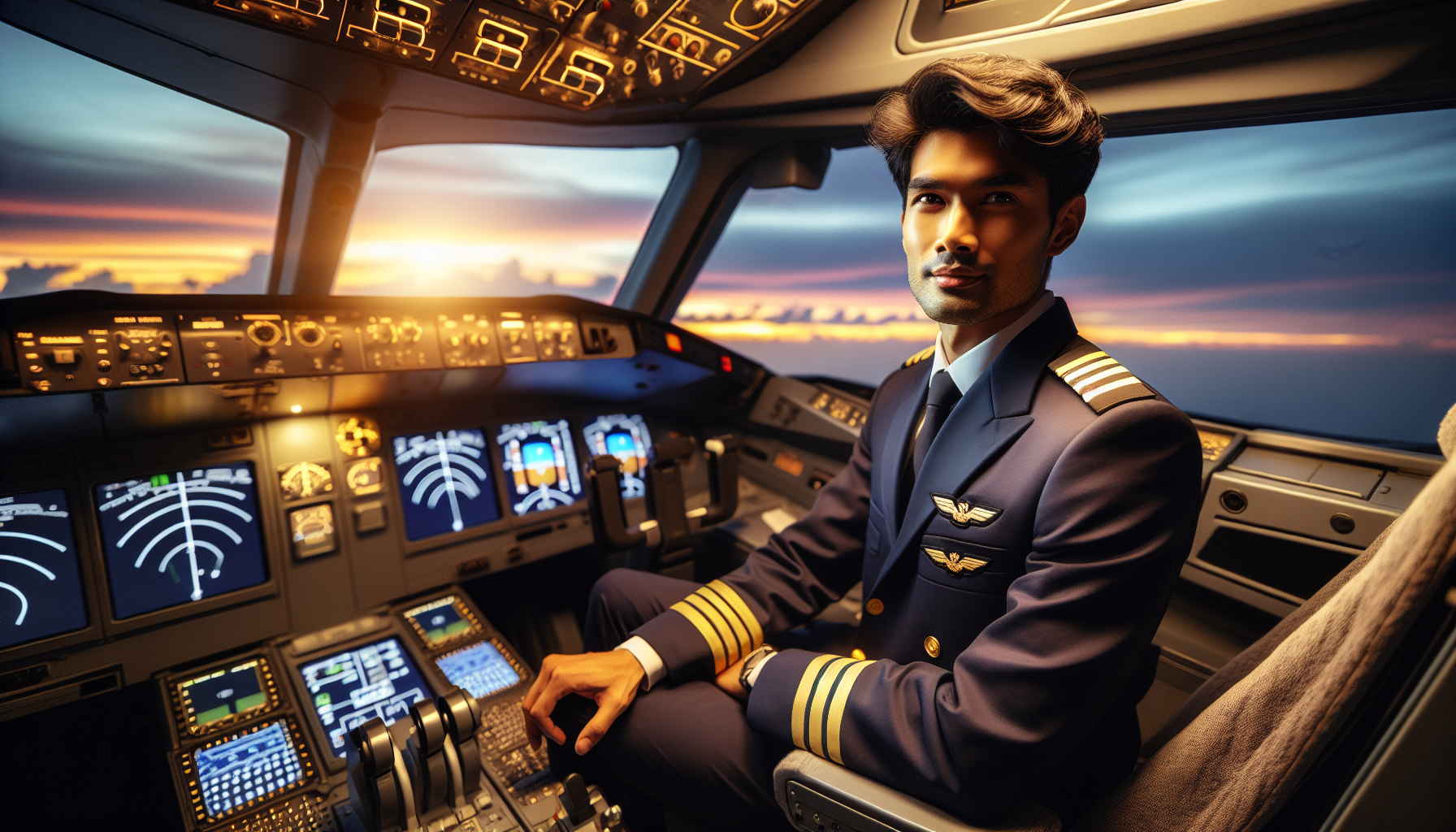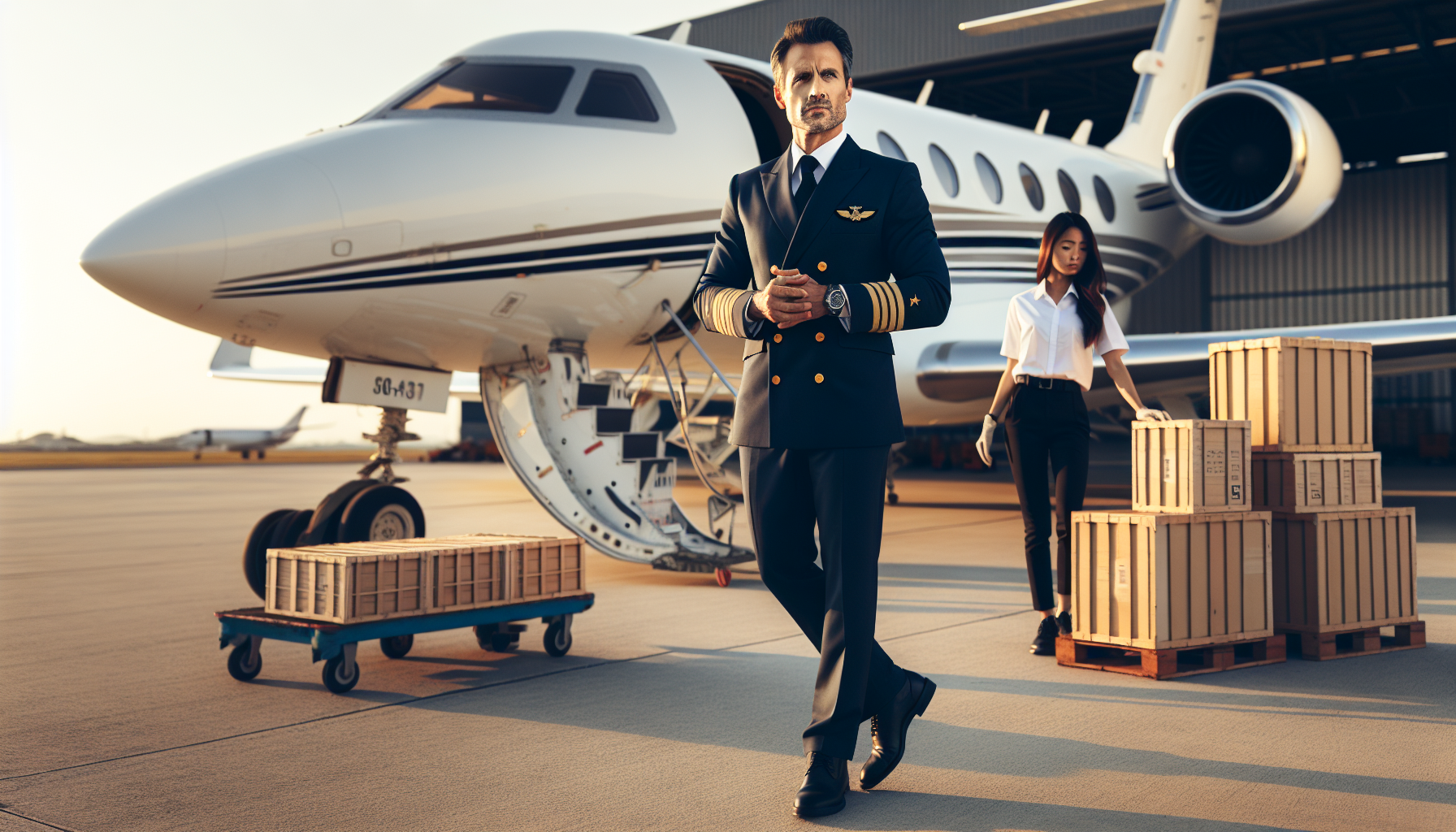Your Path to the Skies: Earning Your Commercial Pilot License Explained
Feb 09, 2024
The dream of soaring through the skies and exploring the world from above is an ambition shared by many aspiring pilots. Earning a commercial pilot license is the key to unlocking a fulfilling and rewarding career in aviation. Whether you envision yourself as an airline pilot, flight instructor, or corporate aviator, the journey to the cockpit is a challenging yet exhilarating experience. In this blog post, we’ll guide you through each essential step along the path to becoming a licensed commercial pilot.
Key Takeaways
-
Commercial Pilot License is a requirement for pilots to receive remuneration through flying.
-
Essential eligibility criteria include being at least 18 years old, having English proficiency and holding an FAA medical certificate.
-
Flight schools offer tailored flight training programs with ground school providing the theoretical knowledge necessary to obtain a commercial pilot license and pursue successful aviation careers.
Understanding the Commercial Pilot License

A commercial pilot license is a great step after obtaining a private pilot certificate, an instrument rating, and a multi-engine rating and is required for any type of flying where the pilot receives remuneration. The Federal Aviation Administration (FAA) establishes specific training requirements, such as completing 250 hours for the commercial pilot certificate and successfully passing the practical test. When pursuing the commercial pilot certificate, pilots have various options, including training in a technically advanced airplane and meeting the entry requirements for commercial airline pilot training programs in the USA.
A commercial pilot license permits pilots to:
-
Earn compensation through flying
-
Pave the way to various opportunities such as flight instruction, corporate aviation, and commercial airline pilot roles
-
Build a path towards obtaining the airline transport pilot certificate and a successful pilot career
Obtaining a private pilot license is not only a great achievement for aviation enthusiasts but also a foundational requirement for those seeking to become an airline pilot.
Essential Eligibility Criteria
Eligibility for a commercial pilot license requires applicants to fulfill certain criteria. They must:
-
Be at least 18 years old (an increase of a year from the minimum age requirement for a student pilot certificate)
-
Have English proficiency
-
Hold at least a 2nd class FAA medical certificate
Once a commercial pilot license is obtained, pilots can further enhance their skills and gain more flight hours and experience by pursuing a flight instructor certificate. This additional certification opens up more employment opportunities within the aviation industry and helps pilots build a strong foundation for a successful career.
Advancing from Private Pilot to Commercial Pilot
Taking the leap from a private pilot to a commercial pilot requires additional training and commitment. For private pilot certification, individuals must:
-
Be at least 17 years old
-
Hold a valid 3rd class FAA medical certificate
-
Complete training at flight schools offering the necessary instruction and resources
-
Successfully complete written, practical, and oral examinations
The minimum number of flying hours necessary for private pilot certification is 40 hours, with the average in the US being approximately 70 hours.
Transitioning from a private pilot certificate to a commercial pilot certificate involves building on the existing foundation of flight skills, accumulating more flight hours, and passing the FAA exams. This process often includes mastering advanced flight maneuvers, improving navigation skills, and gaining experience in cross-country flying, which refers to flying between airports.
Tailored Flight Training Programs
Several flight training programs are designed to meet individual needs and preferences. Both Part 61 and Part 141 flight training programs are available, with Part 61 offering a more flexible instruction approach and Part 141 following a structured curriculum route. These programs enable future commercial pilots to select a learning environment that aligns best with their aspirations and objectives.
Many flight schools organize events that provide prospective pilots with the opportunity to interact with their team and gain more insight into the process of becoming a pilot. By researching and applying to flight schools that best align with your objectives, you can ensure a smooth and effective flight training experience, setting yourself up for success in the aviation industry.
Ground School and Theoretical Knowledge

Ground school is an essential component of commercial pilot training, covering critical theoretical knowledge required for safe and efficient flight operations. Topics covered in commercial pilot ground school include:
-
Preflight preparation
-
Pilot qualifications
-
Airworthiness
-
Weather
-
Cross-country flight planning
Ground school can be completed through scheduled classes, weekend programs, or home study courses, depending on the individual’s preference and availability.
A solid grounding in theory, as provided by ground school, is a key factor in passing the FAA Commercial Pilot Knowledge Test. The test evaluates an applicant’s knowledge of:
-
Aerodynamics
-
Weather
-
Flight instruments
-
Navigation
-
Regulations
-
Aircraft systems
-
Emergency procedures
By allocating time and effort to ground school, future commercial pilots can build the knowledge base required to perform well in practical flight training and reach their aviation career objectives.
Building Required Flight Hours
Accruing flight hours is a pivotal part of commercial pilot training, with the FAA requiring at least 250 hours of flight time, inclusive of specific flight experience criteria. Gathering the necessary flight hours allows commercial pilot applicants to showcase their competence and ability in a variety of flight situations.
There are several effective methods to accumulate flight hours for a commercial pilot license, such as:
-
Securing a job at a local airport
-
Joining a flight club
-
Sharing a plane
-
Volunteering for a charitable cause
-
Towing banners or gliders
By exploring these opportunities, pilots can build their flight experience while also gaining valuable insight into different aspects of the aviation industry.
Passing the FAA Examinations
Obtaining a commercial pilot license requires passing a series of FAA examinations, including written, oral, and practical exams. Enrollment in a formal ground school course is recommended for preparation for the FAA written examination. It offers extensive study materials and guidance from an instructor. Investing time in studying and practicing exam questions can help applicants boost their success rate.
The FAA oral examination addresses advanced areas of knowledge pertinent to commercial pilot operations, such as regulations, aeromedical factors, and aircraft systems. The practical examination is outlined in the Commercial Pilot Practical Test Standards (PTS) book, published by the FAA. By mastering flight maneuvers, emergency procedures, and demonstrating aeronautical knowledge, aspiring commercial pilots can successfully pass the FAA examinations and obtain their commercial pilot license.
From Student Pilot to Certified Flight Instructor (CFI)
Becoming a Certified Flight Instructor (CFI) is a common path for pilots to build flight hours and gain experience before transitioning to airline jobs. A CFI is an individual who has been officially certified by the FAA to teach other pilots how to operate an aircraft. By obtaining a flight instructor certificate, pilots can enhance their skills, accumulate flight hours, and contribute to the aviation community by educating the next generation of pilots with the help of flight instructors.
The current high demand for CFIs presents a prime opportunity for pilots to gain experience and enhance their employability in the aviation industry. Serving as a flight instructor allows pilots to further polish their skills and knowledge, smoothing the path to a successful transition to a commercial airline pilot career or other fulfilling aviation professions.
All aspiring CFIs must first receive their commercial pilot license. Obviously, the commercial license opens up a world of aviation career possibilities!
Preparing for the Checkride
The checkride is a critical component of obtaining a commercial pilot license, as it evaluates an applicant’s flying skills and practical application of aeronautical knowledge. To prepare for the checkride, pilots must master the following maneuvers:
-
Ground reference maneuvers
-
Rectangular courses
-
S-turns across a road
-
Turns around a point
-
Slow flight
-
Steep turns
-
Stalls (power-on and power-off)
-
Short field landings
-
Soft field landings
-
Go-around
-
Crosswind landing
-
Emergency procedures
During the checkride, emergency procedures that are typically evaluated include engine failure and restart procedures, emergency descents, and emergency landings. By thoroughly preparing for the checkride and honing their flight skills, aspiring commercial pilots can demonstrate their competency and readiness to take on the challenges of a professional aviation career.
Career Opportunities Post-Certification

Once a commercial pilot license is obtained, a world of career opportunities opens up for pilots. Job options include:
-
Flight instruction
-
Corporate aviation
-
Cargo transport
-
Regional airlines
The ultimate objective for most applicants seeking to become a pilot in the USA is to fly for a commercial airline. In 2022, the median pay for an airline pilot was reported to be in excess of $225,000, highlighting the financial rewards that come with this fulfilling career.
Graduates of flight training programs, are eligible for interviews to become a CFI and may be approached by airline partners for potential employment opportunities. By exploring various career paths and networking within the aviation industry, newly certified commercial pilots can find rewarding positions that align with their skills, interests, and long-term career goals.
Financing Your Flight Training
Though financing flight training is a substantial investment, averaging between $85,000 and $100,000 in the US to become a commercial pilot, numerous financing alternatives exist to support future pilots in funding their education. These options range from scholarships and loans to payment plans.
Organizations such as the Experimental Aircraft Association (EAA), the University Aviation Association (UAA), and the Aircraft Owners and Pilots Association (AOPA) offer aviation-related scholarships. Additionally, many airlines, including Envoy Air, provide scholarships to assist future pilots with flight school expenses. By researching and applying for financial assistance, aspiring commercial pilots can ease the financial burden of their education and focus on mastering the skills needed for a successful aviation career.
Transitioning to Airline Pilot
The transition from a commercial pilot to an airline pilot necessitates extra flight hours and the acquisition of an Airline Transport Pilot License (ATPL). The FAA stipulates a minimum of 1,500 hours of flight time for airline pilot certification, guaranteeing that pilots possess the required experience and proficiency to manage the duties of flying commercial aircraft.
To obtain an ATPL, pilots must not only accumulate the required flight hours but also pass the necessary examinations. As pilots progress through their aviation careers, they will encounter new challenges and learning opportunities. By continuing to hone their skills and gain valuable flight experience, commercial pilots can successfully transition to a rewarding career as an airline pilot.
International Pilots: Converting Licenses
International pilots looking to operate as commercial pilots worldwide must convert their FAA credentials to meet their home country’s standards. The process of converting pilot licenses can vary across countries, generally involving the validation of the foreign license with the aviation authority of the respective country, which may necessitate extra exams, medical checks, and flight checks.
By successfully converting their licenses, international pilots can:
-
Expand their career opportunities and work as commercial pilots in various countries
-
Explore new horizons and gain diverse experiences
-
Contribute to the global aviation community
This makes the process of converting licenses a worthwhile endeavor for ambitious pilots. In some circumstances, the employer seeking to hire the pilot may assist with the conversion process.
Summary
In conclusion, the journey to becoming a commercial pilot is both challenging and rewarding, requiring a combination of dedication, skill, and perseverance. From understanding the commercial pilot license requirements and eligibility criteria to choosing tailored flight training programs, mastering ground school, and building flight hours, each step is crucial in developing a successful aviation career. Aspiring pilots should seize the opportunity to explore various career paths, finance their education, and transition to an airline pilot role or other rewarding positions within the industry. The sky is truly the limit for those who dare to dream and pursue their passion for flight.
Frequently Asked Questions
How many years does it take to become a commercial pilot?
Becoming a commercial pilot typically takes two years and requires 250 hours of flight time.
How expensive is a commercial pilot's license?
Becoming a commercial pilot can cost anywhere from $55,000 to $104,995, depending on your previous experience. Both prices include the flight training and certification necessary to become a commercial pilot with flight instructor certificates.
Is it hard to get a commercial pilot license?
Becoming a commercial pilot requires extensive training and dedication, typically taking 40-60 hours of flight time for a private license and 250+ hours of flight time for a commercial license. It is certainly not an easy process, but one that can be done with enough determination.
What is a commercial pilot salary?
The average salary for a commercial pilot is $99,640 per year, according to the Bureau of Labor Statistics Occupational Outlook Handbook (October 2022).
What is the difference between a private pilot license and a commercial pilot license?
A private pilot license allows recreational flying, while a commercial license enables pilots to fly professionally and pursue aviation careers.
